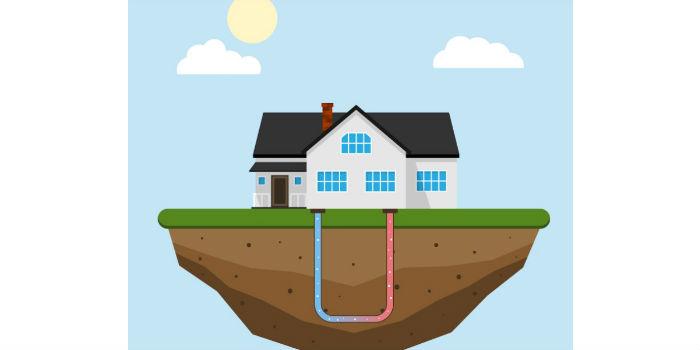 International. Geothermal warming has become a standard in many parts of the world. However, the US lags behind, as geothermal energy has to fight for the federal incentive "waste" that solar and wind power have recently recovered. New developments and a renewed sense of optimism suggest that the United States is on the verge of a geothermal renaissance in the coming years.
International. Geothermal warming has become a standard in many parts of the world. However, the US lags behind, as geothermal energy has to fight for the federal incentive "waste" that solar and wind power have recently recovered. New developments and a renewed sense of optimism suggest that the United States is on the verge of a geothermal renaissance in the coming years.
Geothermal heating systems access the heat retained within the Earth from the original formation of the planet, through the process of radioactive decay, as well as the absorbed solar energy. While geothermal power plants that generate electricity need high temperatures that are only economically feasible to access in areas where volcanic activity occurs near the surface, geothermal warming, by contrast, is available almost everywhere.
Even during cold winters, undisturbed soil below six meters maintains the area's average annual air temperature, and that heat can be extracted with a heat pump. During hot summers, the relatively cooler soil temperature during the winter months means the system can be reversed to provide cooling. In nature, many animals and plants use the seasonal temperature balancing effect of the soil, digging and digging to create a warmer or cooler environment, which gives geothermal energy an attractive touch of bioimimetry.
We have been using geothermal heat for millions of years, long before the appearance of homo-sapiens, bathing in natural hot springs heated by geothermal. The first recorded commercialization of geothermal heat occurred during the Roman conquests of what is now England. After seizing "Aquae Sulis" (now known as Bath, Somerset), Roman engineers channeled thermal water to power paid public baths and underfloor heating for those who could afford it. This was a precursor to geothermal district heating systems that are now found in more than 70 countries around the world.
"There are some countries, Sweden is one, where [geothermal warming] is mandatory; have completely eliminated oil," said Kyle Murray, director of business development, Bosch Thermotechnology Corp., who is optimistic about the development of geothermal warming in the U.S. despite a lack of support from the federal government, and in the very promising even smaller Canadian market.
"In the United States and Canada, the market will continue to grow due to interest from owners and developers, as well as utilities and states. Although our [federal] government has decided not to, there are still a number of states committed to achieving climate goals: Vermont, New York, California. All utilities are looking to encourage heat pumps with air and water source, because they see the future," Murray added.
In 2018, heavy lobbying efforts led to the reinstatement of federal geothermal tax credits. However, the unreliable nature of stopping the start of tax credit allocation means that the U.S. geothermal industry is years behind what it should be and many blame poor federal strategies. The U.S. government first issued the geothermal energy tax credit in 2008, right at the beginning of a major economic crisis that meant the construction of few new properties, severely limiting growth in the geothermal market. Just as the real estate market was recovering, in 2012 the tax credit was eliminated.
The reinstatement of tax credits, more than anything, restored the confidence of the installer and distributor to the industry, according to Steve Smith, CEO of Enertech Global LLC. Smith suggests that awareness of geothermal heat pumps will continue to grow due to the demand for more efficient and environmentally friendly technologies. Despite policy failures, the reinstated tax credit gives the geothermal sector a timely boost, in a decent housing market, so the industry can prove it can stand on its own.
The initial cost of installing a geothermal system in a single home is prohibitive, so the growth of the geothermal market relies heavily on large-scale property developers. Only developers can demand geothermal energy and drill in advance. Homeowners can lease access to the circuit from the land developer or a utility company, creating a steady stream of revenue for the system operator and reducing costs for the end user.
In Whisper Valley, Texas, a 7000+ housing development created a "Geo-Grid" through a main circuit that offers connections to every home, thus providing affordable heating in winter and cooling in the hot Texas summer. "People report utility bills that are sometimes $5 a month, and that's in Austin, where in summer, it's 100°F," says Bosch's Murray, who provided equipment for the Whisper Valley project.














